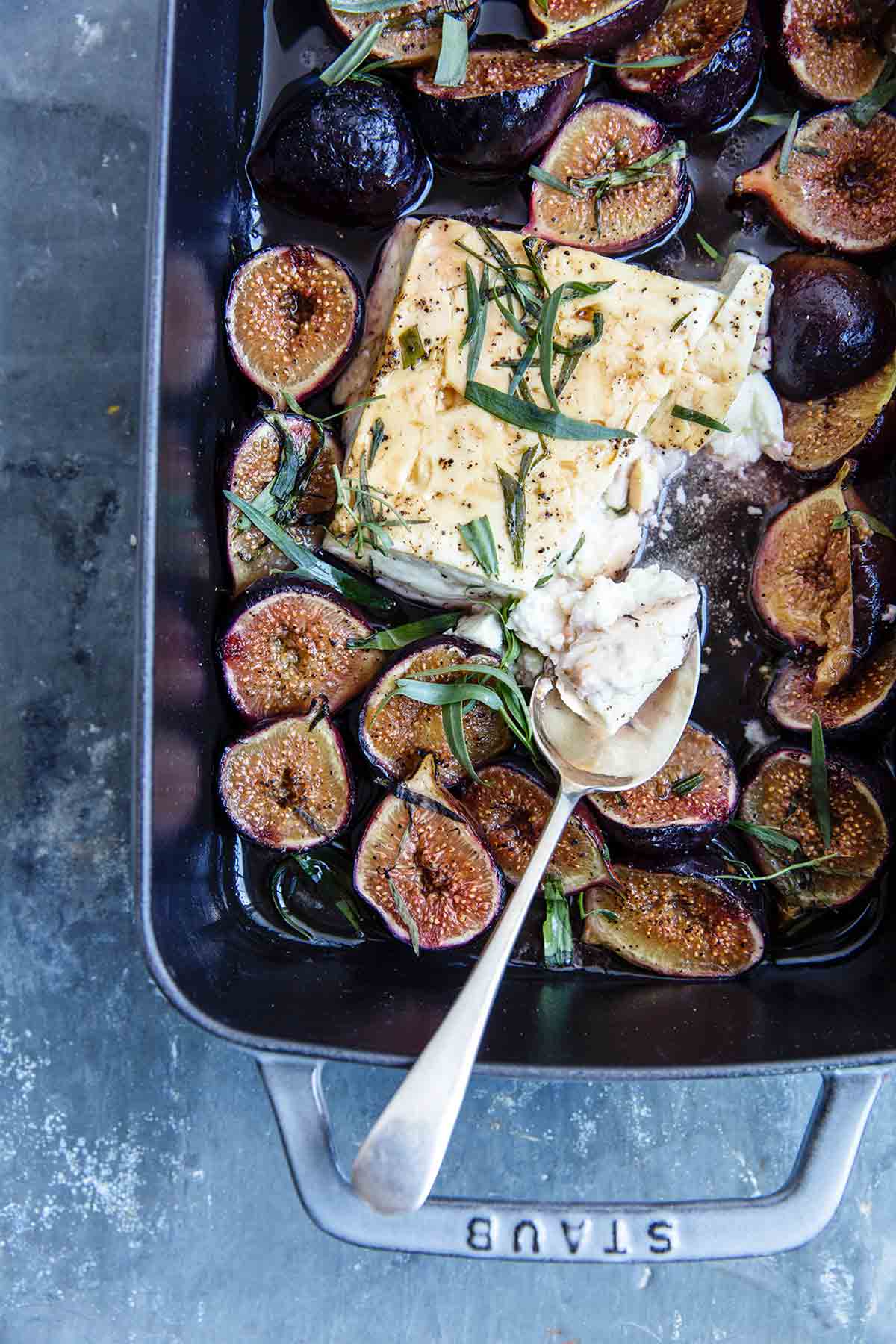
TL;DR (Quick-Answer Box)
- What it is: A show-stopping appetizer featuring creamy, warm feta cheese and sweet fresh figs baked in a dish and finished with a honey drizzle.
- Why you’ll love it: Ready in under 30 minutes with minimal effort, this salty-sweet, warm appetizer is decadent yet light, making it great for entertaining in any season. Smear it on bread, plop it on crackers, spoon it over pasta.
- How to make it: Toss figs with olive oil, place a block of feta in the center, drizzle with honey and oil, then bake until knife-tender.
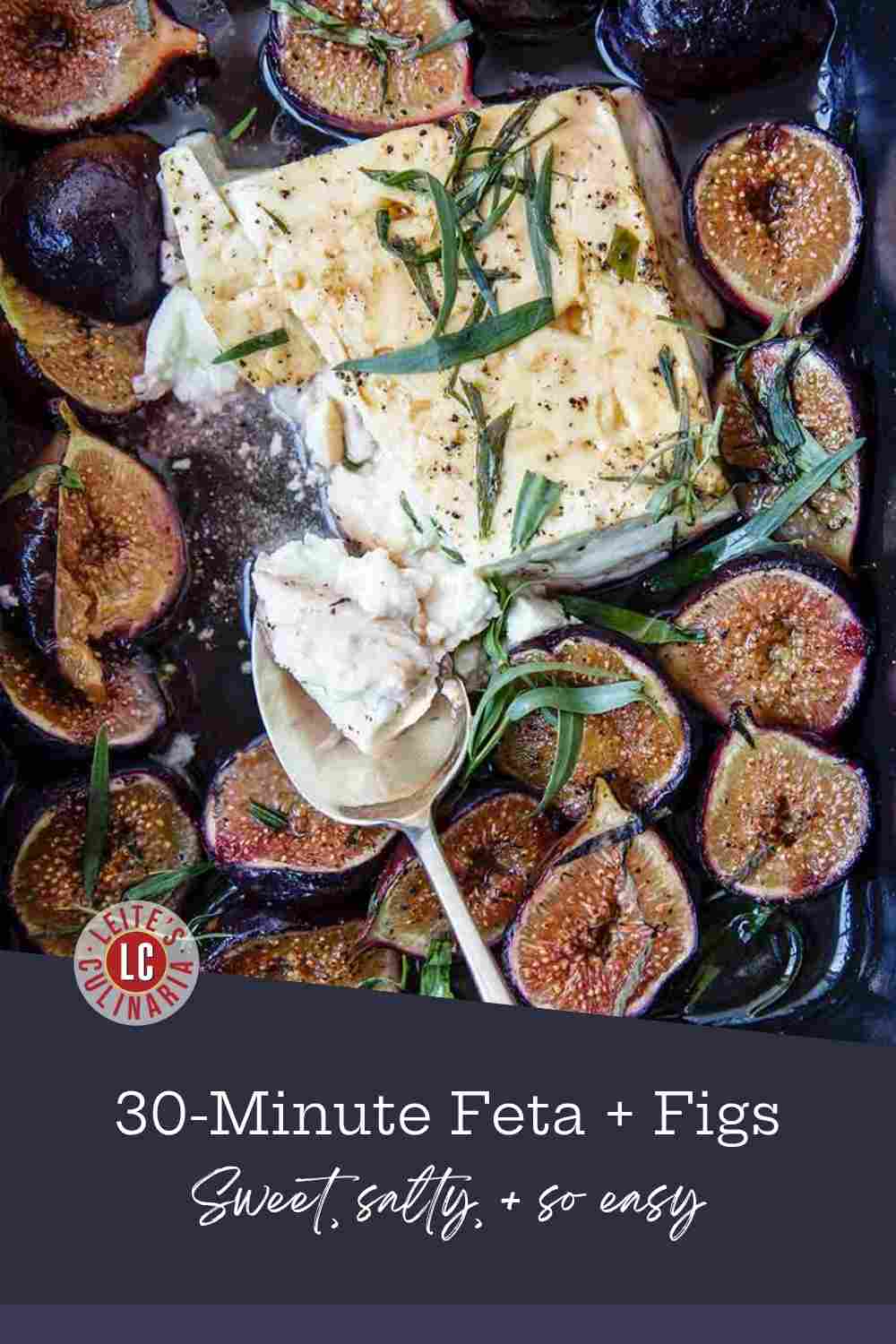
Featured Review
This recipe, as we say, is a keepah! I prepared it for a catering job the other night and it won raves. And why wouldn’t it? The saltiness of Narragansett Creamery’s Salty Sea Feta paired with the figs’ honey-ed nectar was luscious. Many thanks for sharing, David!
Laura Raposa
Baked feta is one of the easiest and most elegant appetizers I whip. The cheese takes on a beguilingly airy texture when gently warmed, and its tanginess takes perfectly to a drizzle of sweet honey. You can continue to impress friends and family with this baked feta recipe all year round when you switch up the fruit seasonally.

Why Our Testers Loved This
Our testers are calling the combination of warm salted cheese with sweet roasted fruit “simply fabulous” and “special, visually stunning, and very rich.” Kind of makes you want to try it, doesn’t it?
Notes on Ingredients
- Fresh figs–If you can’t get fresh figs, use another dark fruit, such as plums, grapes, or blackberries.
- Feta cheese–Since the feta is the star of the dish, choose good-quality feta here. Ideally, Greek sheep or goat’s milk feta, if you can get it.
- Tarragon–If the anise flavor of tarragon doesn’t appeal to you, try substituting other fresh herbs, like chopped rosemary or torn fresh basil.
Step-by-Step Instructions
- Preheat the oven to 375°F. Have ready a 9-by-13-inch baking dish.
- Assemble the fruit and feta. Toss the fruit with olive oil and seasoning in the baking dish, then place the feta in the center. Drizzle with olive oil and honey and top with a sprinkling of tarragon.
- Bake the feta. Cook until the feta is melting on the edges and the fruit is softened. Drizzle with balsamic vinegar before serving, if desired.
Want to Save This?
Your Feta & Fig Questions, Answered
Depending on your personal preference, or what is in season, this easy appetizer could be made with plums, red or black grapes, or plump blackberries.
You definitely want to purchase feta that is stored in brine. For the best results, choose Greek feta, which will be made with sheep or goat’s milk.
Serve the warm, melted feta and fruit with water crackers, toasted crostini, or wedges of homemade pita bread for scooping and spreading. It’s excellent as part of a larger mezze meal, including Turkish cigars and stuffed mushrooms.
Pro Tips & Troubleshooting
- Baked feta is best served immediately, while still warm and soft. We don’t recommend storing or reheating.
- Don’t be tempted to speed along the melting and browning process by broiling the cheese. You risk having the honey and tarragon burn.
- If your block of feta is more than 1-inch (25-mm) thick, it may need a few extra minutes of baking time.
More Great Cheese Appetizer Recipes
Write a Review
If you make this recipe, or any dish on LC, consider leaving a review, a star rating, and your best photo in the comments below. I love hearing from you.–David
Featured Review
With a hands-on time of 5 minutes, this incredibly light yet decadent baked feta and figs dish comes together in no time and is immensely delicious. I subbed out the figs for fresh blackberries but cannot wait to try this again when figs are in season. Came out of the oven and the berries were bubbling away in their gorgeous purple juices yet retained their berry shape. The feta was slightly puffed and lighter than air. So, so creamy!
Anthony Torre
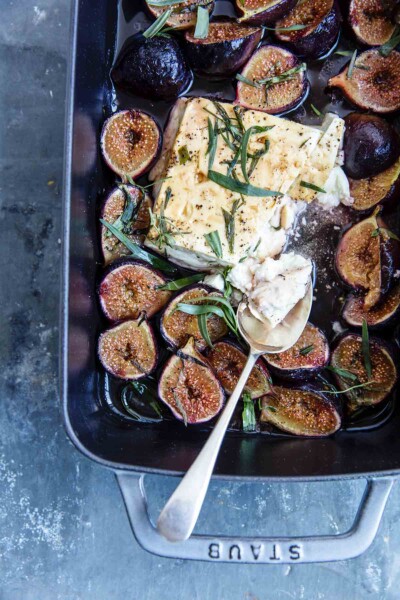
Baked Feta and Figs
Ingredients
- 3/4 pound fresh figs, halved lengthwise (or substitute seedless red grapes, sliced plums, or fresh blackberries)
- 2 tablespoons extra-virgin olive oil
- 1/2 teaspoon kosher salt
- Pinch freshly ground black pepper
- One (8-ounce) block feta cheese
- 1 teaspoon honey
- 1 tablespoon roughly chopped fresh tarragon
- Assorted crackers or warm pita, for serving
- Drizzle of balsamic vinegar (optional)
Instructions
- Preheat the oven to 375°F (191°C) with a rack in the center position.
- Combine the figs in a 9-by-13-inch (23-by-33-cm) baking dish with 1 tablespoon olive oil, the salt, and pepper and toss to coat. If your block of feta is packed in brine, drain it and pat it dry. Nudge the figs toward the edges of the baking dish, and place the block of feta in the center.
- Drizzle 1 tablespoon olive oil and the honey over the cheese and then sprinkle the tarragon over everything.
- Bake until the figs have released some of their juices and the feta is knife-tender, 15 to 20 minutes. The feta should be relaxed and gloriously melted around the edges. If using any of the substitutes for figs, you may need to add about 5 more minutes to the baking time—you want the fruit to be softened but not shriveled.
- Serve the baked feta and figs warm, with plenty of crackers or warm pita alongside. To balance out the sweetness, feel free to add a drizzle of balsamic vinegar (or a nice glass of Malbec, for that matter).
Notes
- Serving–This dish is best served immediately after baking. We do not recommend storing or reheating.
- Course–This can be served as a standalone appetizer with crackers and pita or as part of a larger mezze meal.
- Ingredients–Use good-quality feta, ideally Greek, for the recipe. If your block of feta is more than 1-inch thick, it may need a little extra baking time.
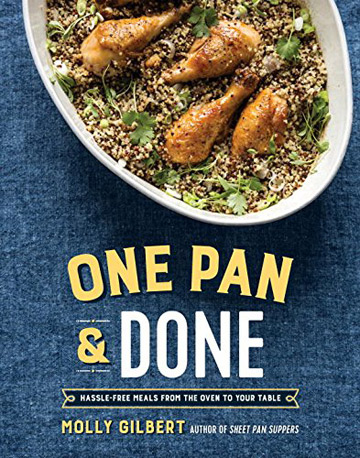
Explore More with AI
Nutrition
Nutrition information is automatically calculated, so should only be used as an approximation.
Recipe Testers’ Reviews
This baked feta and figs appetizer idea was simply fabulous. The combination of the salty yet creamy feta cheese, the anise-flavor of the fresh tarragon, and the sweetness of both the honey and the fruit was just wonderful!
I used a nice barrel-aged Greek feta cheese (not packed in brine) and couldn’t find fresh figs so I subbed in seedless red grapes instead. I baked the cheese dish for 20 minutes and checked it but I wanted the grapes to be a bit blistered or wilted and they weren’t quite there yet, so I increased the total cooking time to 25 minutes. The grapes were warm and blistered at this point and the cheese very soft and slightly melted, which was nice. The cheese melted a bit at the edges.
The taste of the warm feta was lovely—almost reminded me of halloumi cheese in overall taste. I served the warm appetizer with some flavorful black pepper crackers which was a nice combo.
I didn’t find it overly sweet with the grapes and the honey because I think the sweetness from the honey was a nice counterpart to the salty taste of the cheese. Overall, a lovely idea to pair the cheese and fruit with tarragon, which I love. I would like to try it with figs when they’re in season.
This baked feta and figs reached way past the normal cheese and crackers appetizer. It’s special, visually stunning, and very rich. A little goes a long way.
Despite the thought that fresh figs could be elusive in the Midwest when I tested this, I found some Peruvian beauties at a wonderful international produce market. I also purchased a lovely French sheep’s milk feta.
As with my question about dried figs, I also wondered and still wonder if dried tarragon could work here, and I believe it could. The fresh tarragon may lend a prettier visual to the presentation, but a good quality dried tarragon should also do the trick.
As suggested, serve with PLENTY of crackers. This will easily serve more than 6, comfortably 8, and quite likely even up to 12.
Since this dish seemed very special, I purchased some very special crackers, a fig and olive crisp that I thought would nicely complement the feta, fig, and tarragon flavors.
My figs were not labeled as to variety. When I cut open the black skin, they were very pink on the inside. My figs retained their stunningly beautiful black on the edges and pink in the center coloring.
I also think it would be quite delicious with a more standard domestic cow’s milk feta; in other words, this would still be tasty and special even without going to the uppermost reaches of quality for the key components here.
I would also be interested in the blackberry and plum ideas, since both would not at all bring this into a too sweet direction. Frankly, were the baked figs not so wonderful, I could also envision baking the cheese and all of the other ingredients, minus the fruit, and then serving dried figs or even dried tart cherries and/or some olives or almonds on the side.
Lastly, there is some flexibility with proportions here, less or more cheese, less or more fruit, a combination of fruits, etc. This is absolutely terrific executed with precision and dedication to the recipe as written, and would (will!) also be terrific used as a concept with variations as noted.
This Greek girl thought she knew almost every way to enjoy feta, but this baked feta and figs was totally new and different—and we loved it. This just improved my appetizer toolkit. The simple method can very easily be scaled up or down—a half recipe is a lovely and indulgent mezze course or Friday night nibble for two (although I can vouch for it also being lovely on a Monday).
We tried two variations and can’t wait for figs to come back in season so we can try that version. With blackberries (my personal favorite), the slab of feta had nicely kizzened (charred) at the edges after 20 minutes and the blackberries had turned magenta but not burst.
The tarragon might have been the biggest surprise for me—it paired so nicely with the other ingredients. I used kitchen shears to snip the leaves in rough pieces over the dish, then a grind of pepper and some kosher salt.
I kept the slab to about an inch thick. If your feta was thicker you might want to give it a few more minutes. Made with red seedless grapes, I gave it 25 minutes, with feta slabs still about 1-inch thick, and this was the version that himself liked best. The grapes had not shriveled but were cooked enough that you wanted to be careful as the liquid center was very hot straight out of the oven, which is how you want to serve this.
I used a domestic feta that wasn’t too salty (you might adjust the salt if using a Greek, French, or other feta). If you want to make this as half a recipe, use a smaller dish (7″ x 9″ or 8″ x 10″ works great).
I served it with water crackers and thin slices of homemade sourdough and both worked fine. With figs, I think you might want to use a little balsamic as they have less acid than berries or grapes.
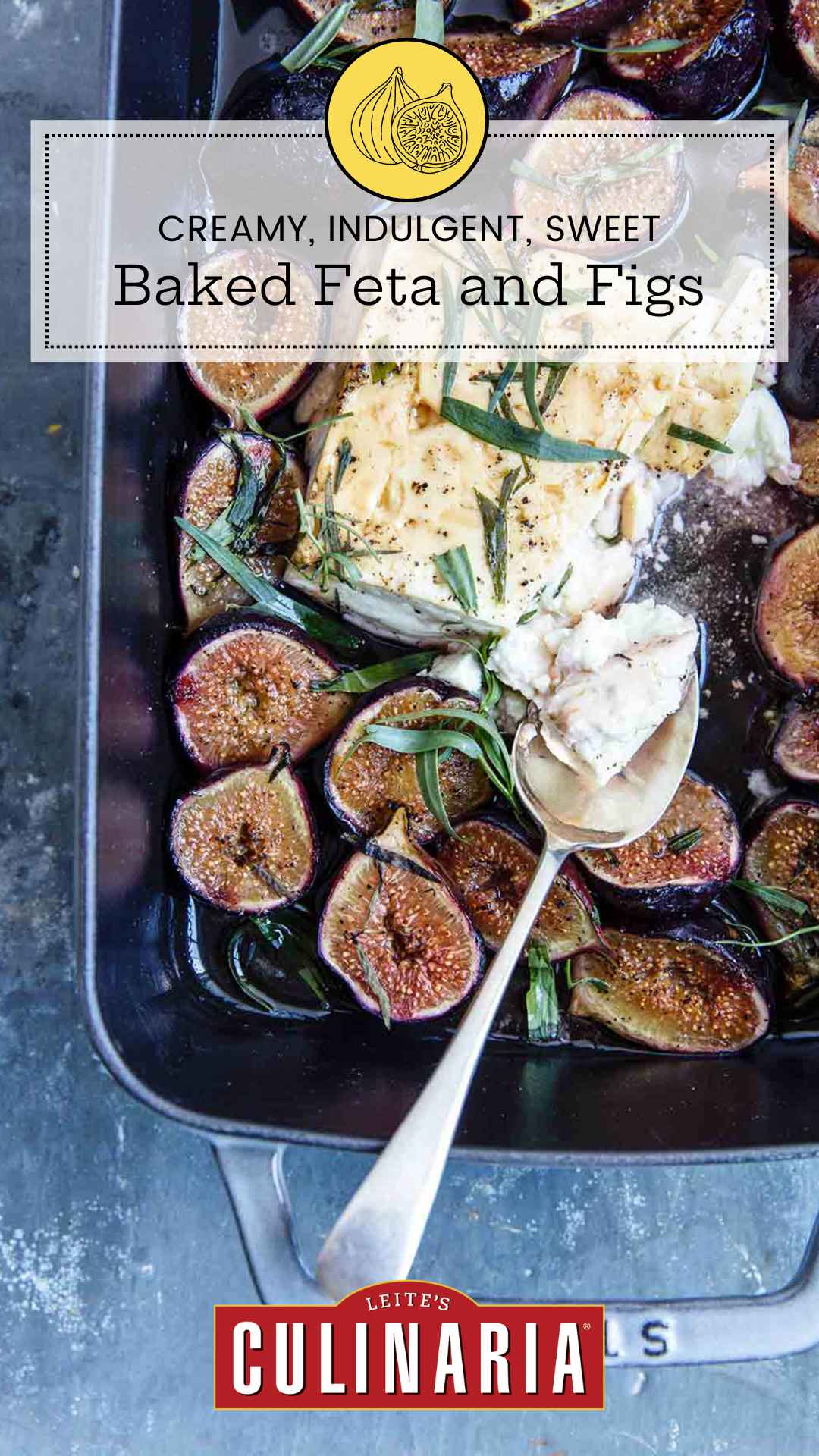
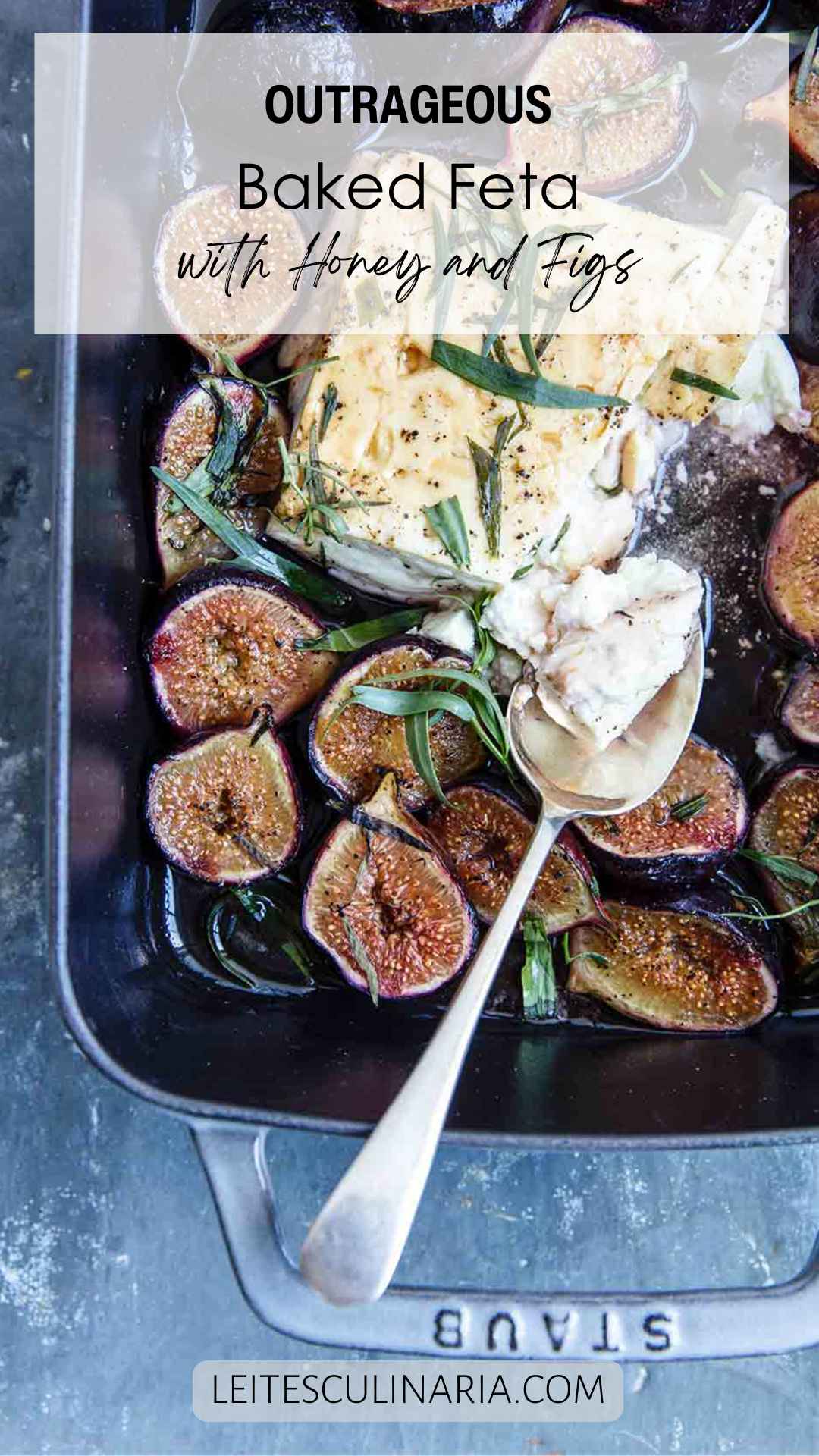
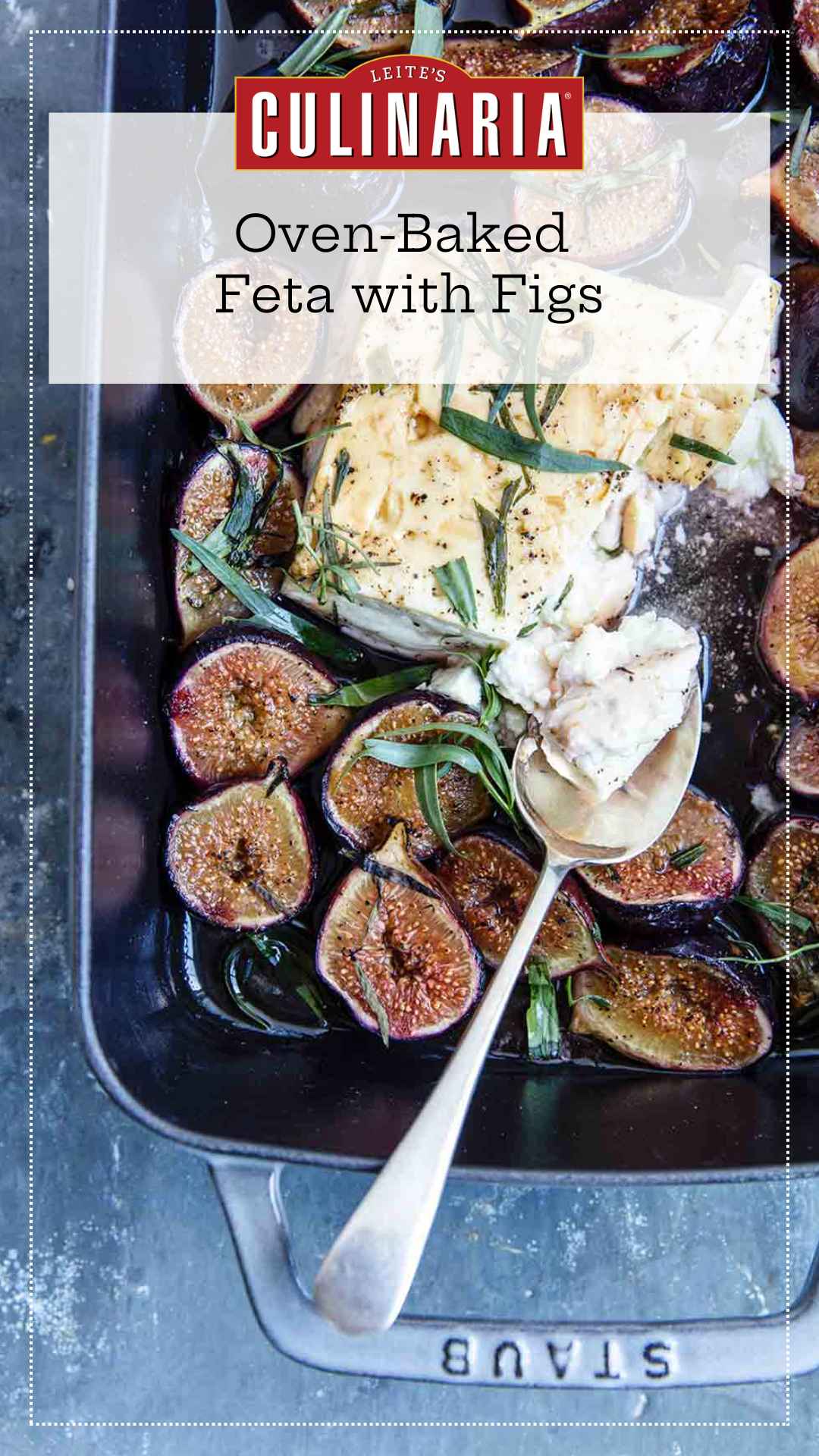
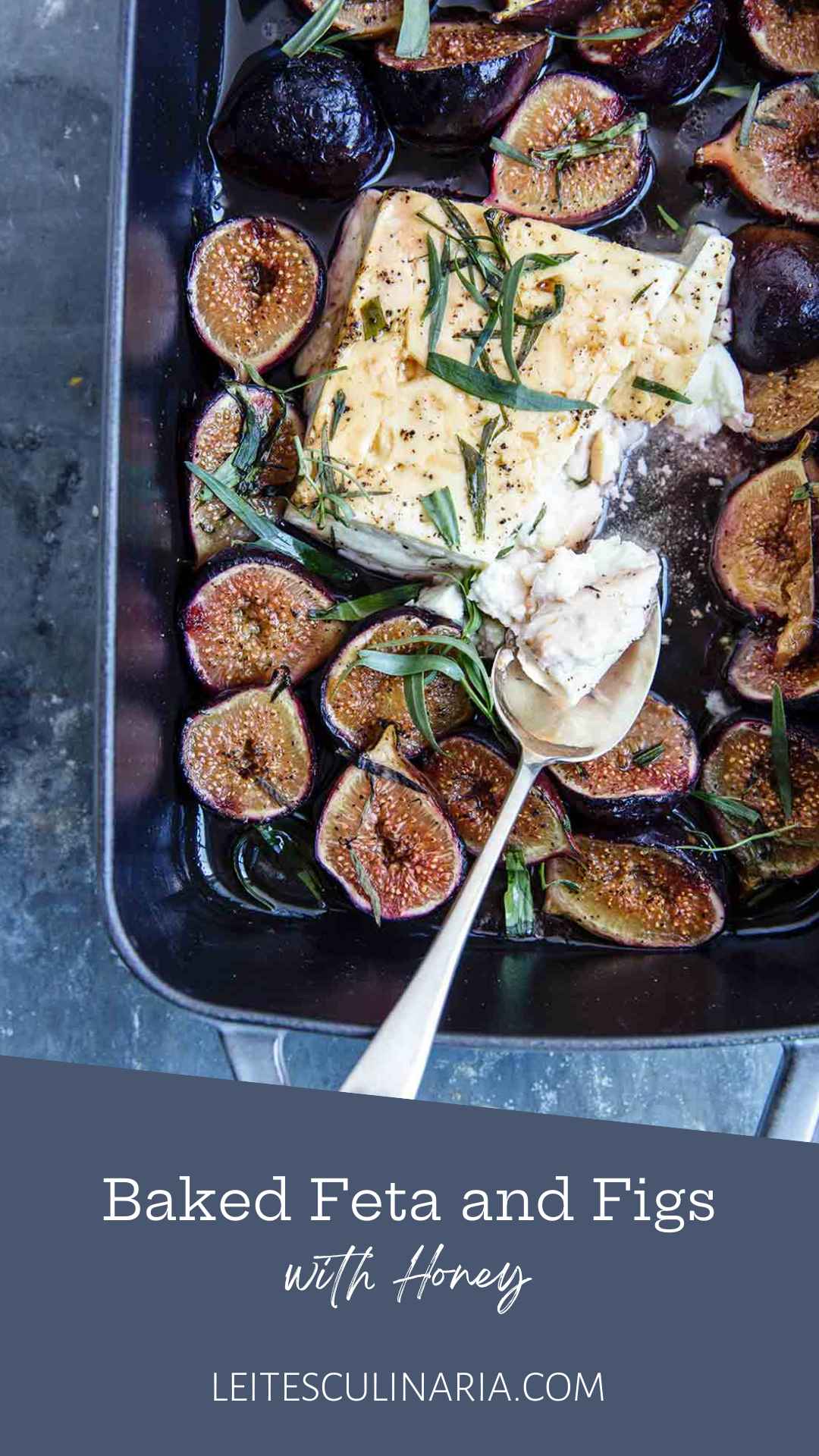
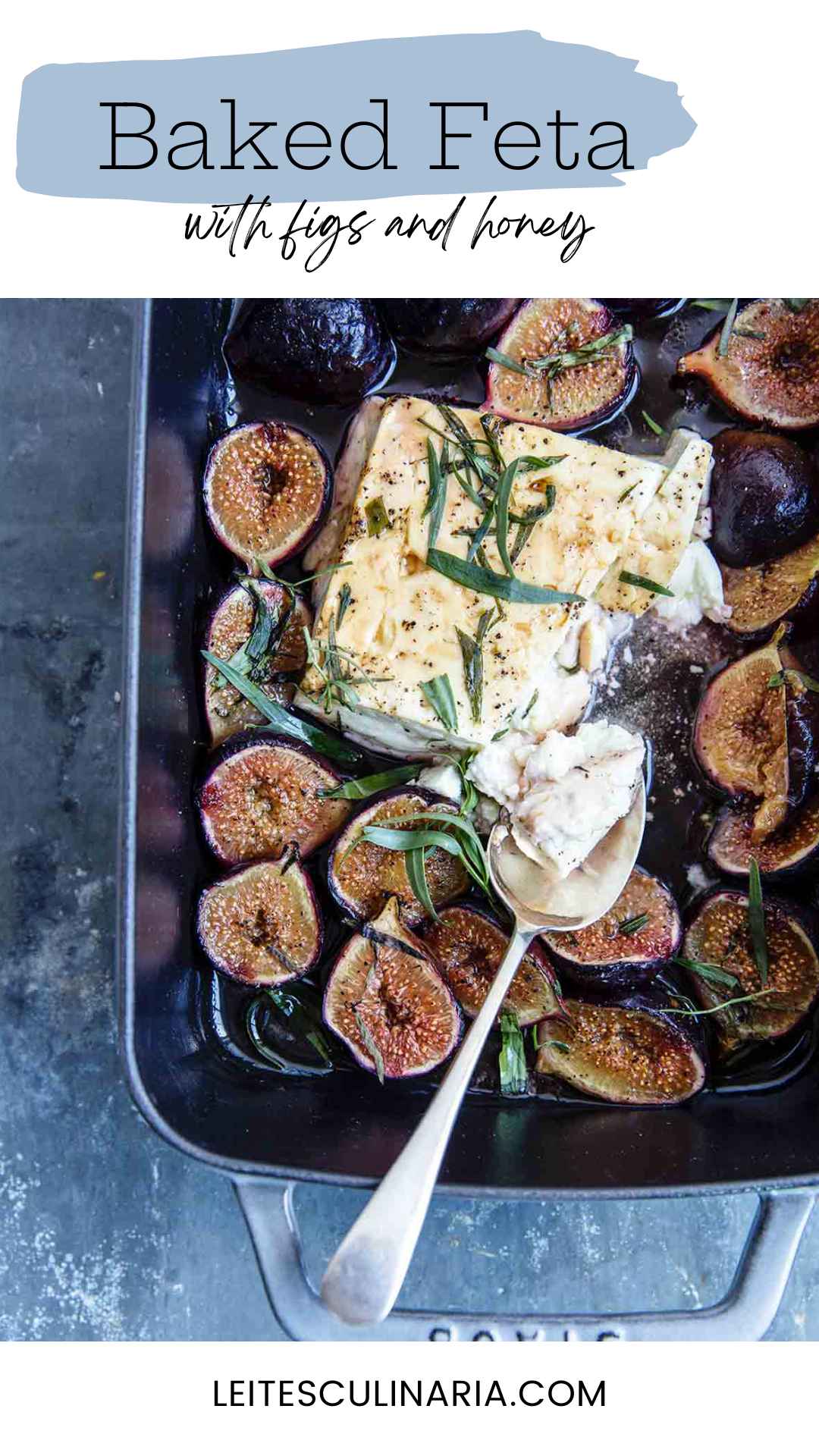
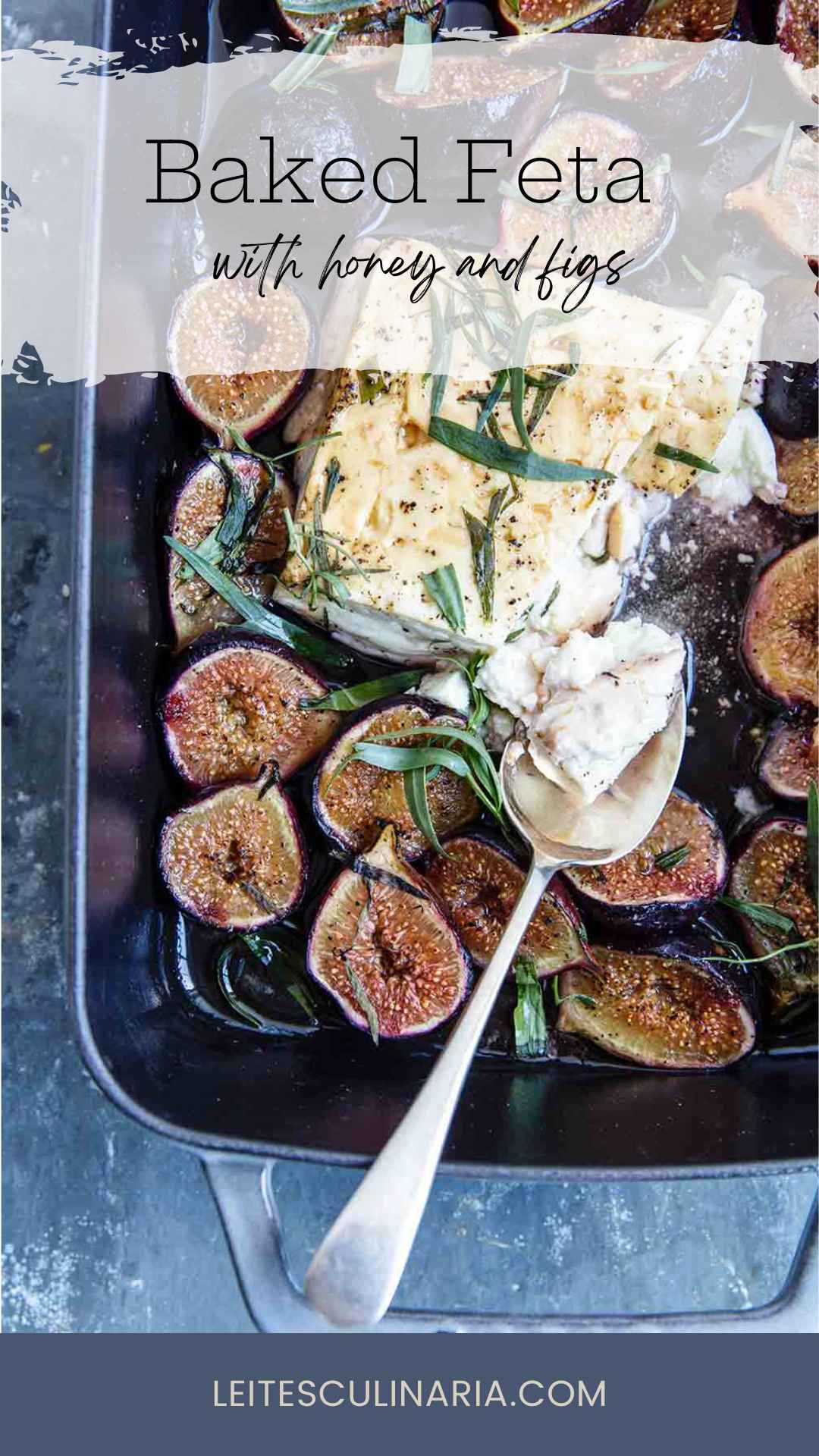
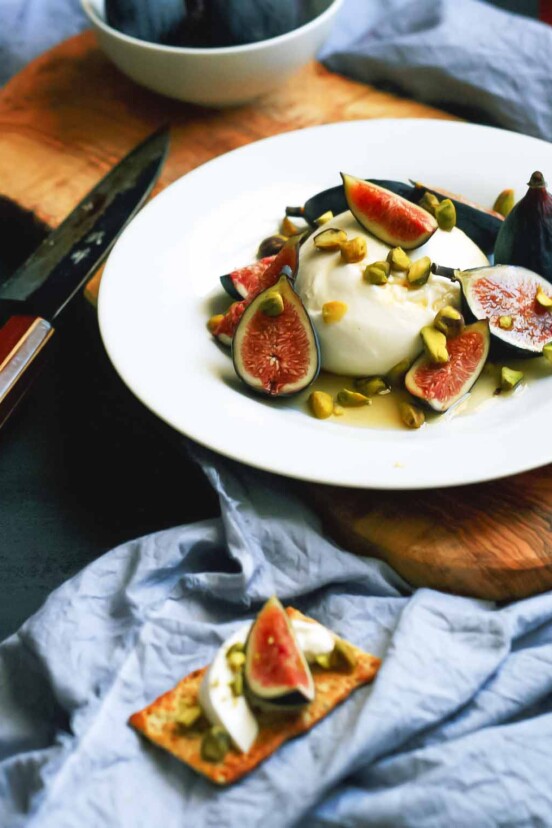
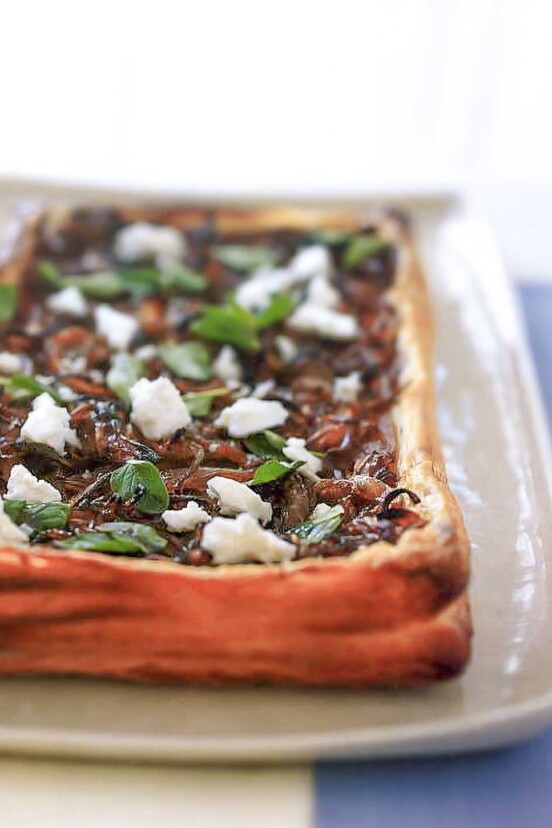
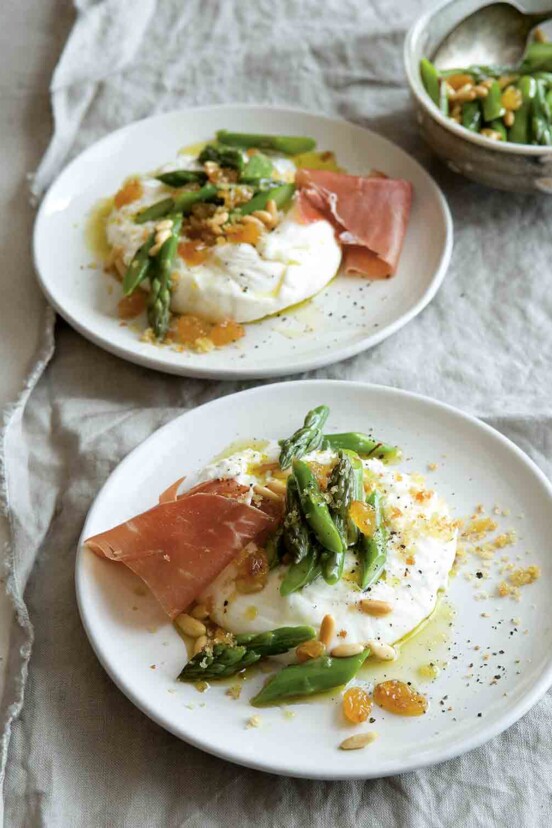
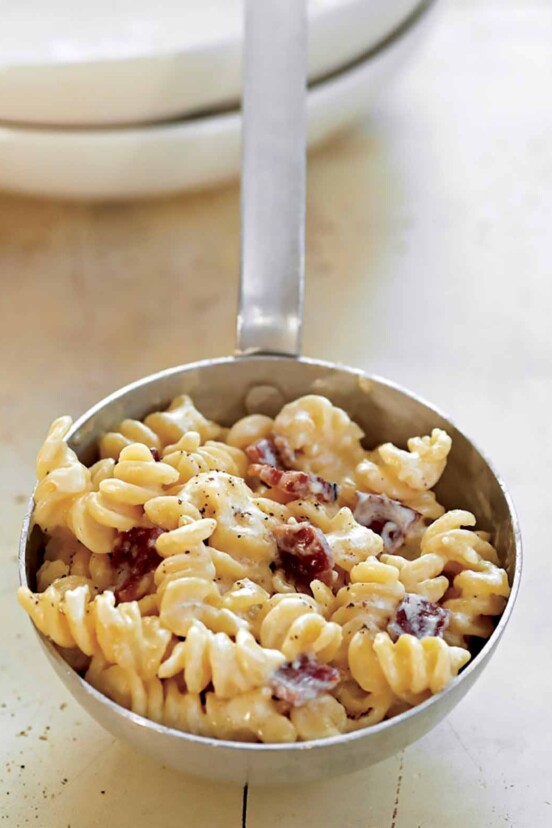













I’ve just made this because I needed something quick for a small drinks gathering. RAVE reviews and it is now in the rotation.
Wonderful, Paula!
Delicious! I added a bit of zaatar and some mint leaves to finish. Thank you!
You’re welcome, Sam! We’re so pleased you enjoyed this. Thank you for taking the time to comment.